What to Expect At Japanese Weddings
The Do’s and Don’ts
It's coming up summer, the cicadas cry for love, couples tie the knot and you're invited to a Japanese "kekkon shiki" (ceremony) or "kekkon hiroen“ (celebration).
Congrats! You’ve been chosen as a special guest for someone’s big day. Yet, you stand there puzzled, Japanese wedding invitation in your hands, sweat dripping off your forehead, wondering how different the experience would be from what you’ve seen back home and whether you’ll be able to pass through all formalities in grace and style in this culturally challenging land of emotions. Well, wipe that sweat, start reading and get ready to celebrate your Japanese wedding debut.
A Japanese wedding — no matter if the ceremony and celebration are traditionally held in a shrine or western style in a hotel — has got little to do with what you might have experienced so far.
First of all: feel very honored, because it’s generally only family and close friends who get the invitations. Your second task? Start preparing right away.
When choosing your outfit, present, even the congratulations card, make sure you follow some (rather non-negotiable) rules.
How to RSVP
No matter if you attend the wedding or not, you are expected to send a written answer. You will find a card along with your invitation, which requests you to confirm your presence or absence. If you’re attending, circle 出席 (shusseki) and if you’re not, circle 欠席 (kesseki). Make sure to delete the honorary ご (go) before each word with two lines, and write a short congratulatory message in either Japanese or English. Send the card back as soon as possible.
How to dress
No big difference here with other countries — it’s a formal event, so wear something formal unless you’re specifically told not to. However, there are a few taboos for women that you’ll find everyone silently obeying, regardless of the type of wedding you’re attending. The biggest of them all is to never wear white at a wedding, because, well, the color’s already taken by the bride and no matter how important to the world you are, you shouldn’t be more conspicuous than her. Other no-nos include wearing too revealing clothes, too short skirts or excessive colors and jewelry.
Again, the principle behind it is simple — whatever you do, don’t stand in the way of the bride!
Wear something simple, but chic, such as a cocktail dress (black is okay), closed high heels and simple jewellery — with that nothing can go wrong.
For men, the standard is a black suit with a white tie, though suits of other colors (in-line with common sense) and colored ties are fine as well. But then again, you wouldn’t want to turn up in a white suit.
What to give
As blunt as it sounds to foreign ears, the simple answer to this is: money. It’s all about the money, money, money and the fancy envelopes they come in. The whole concept of goshugi (money gift) is deeply rooted in the culture of Japanese weddings, and comes with a long list of unspoken rules and regulations.
But the whole thing behind it is that instead of filling the newly married couple’s tiny Japanese home with pots, plates, useless vases and what not, well, you may give them the much needed cash to start their marriage, and — help them pay for the wedding fiesta, which usually costs at least a million yen in and around Tokyo. So, as soon as you send off your notice of attendance, visit a stationary store and buy a goshugi-bukuro, which you can easily recognise by the gaudy design, usually bearing the kanji for celebration (御祝 or 寿).
Always buy the most colorful envelope – the more vivid, the better.
And yes, you’ve probably guessed that by now, but the black and white envelopes that are usually placed quite near the celebration cards are not what you should be aiming for — these are for mourning.
After you buy the envelope, think about the amount you’ll enclose. How to determine this? Think about what your relationship with the person who invited you is. For friends and colleagues of the couple, the average amount is ¥30,000 in the Tokyo and Kanto areas, as well as other larger cities. In some places, like Hokkaido and Okinawa, the standard is ¥10,000. If you’re attending a colleague’s wedding, give the couple ¥30,000 if you have the same or similar status, but if you’re the boss, you wouldn’t want to go under ¥50,000. If you’re attending with your partner, hand in a single envelope with approximately ¥50,000.
If you’re told by your friend not to worry about the “standards,” or if you can’t afford paying the average amount, include some cash, but make sure you avoid even numbers — ¥20,000 or ¥40,000 is not a clever move, because the couple may think you wish them to split. Not to forget — the bills you include should be freshly withdrawn from the bank and crisp as new, without stains, markings or folds. If you can’t visit the bank for that, put a thicker cloth on it and try ironing the bills — sounds like a weird idea, but it works surprisingly well.
The last thing to do is to write your name on the front page of the goshugi-fukuro, your address and name inside the white envelope and the amount of cash you’ve included. At the wedding, give the money to the kind people at the reception, combined with a quick “Omedeto gozaimasu.”
What to expect
Well, it’s Japan, so expect nothing impromptu. Everything has been scheduled months in advance, including when and how the bride and groom enter the ceremony and party venue (usually at least twice, wearing different attire), the food that’s served on your table, the performances and speeches and the procession of the ceremony.
The wedding event is usually divided in two parts: the wedding ceremony (kekkonshiki) and the wedding party (hiroen), followed by a nijikai (after-party), usually only for friends and colleagues.
At the hiroen, there won’t be dancing, be warned, so keep your groovy mood for the after party. But you’ll see a series of speeches by the guests, usually one by the groom’s boss, the bride’s boss and one by each of the two’s friends. Don’t be afraid to shed a tear even if you don’t understand a thing they say, because that’s part of the celebration. You’ll see many cry, especially when the newlyweds play a self-made video, describing their childhood, how they met and what led them to tying the knot.
Another teary moment occurs when the bride will read a letter addressed to her parents, in which she recalls moments of her upbringing and rite of passage, ended by a moving speech on her gratitude for their struggles when raising her. The groom will usually stand close to the bride, wiping away her tears and holding the microphone for her. He is not expected to read a letter, but usually will say a few words addressed to his parents as well. This part usually concludes the wedding, followed by a farewell video, filled with “Thank yous” for your presence on their big day.
When the party is over
Teary and tipsy by now, you’ll know when it’s time to leave, because the groom and the bride will suddenly disappear and the guests will quickly start packing as well. You won’t leave the party with empty hands. The bag under your chair is for you! It’s a present from the couple called hikidemono, which is a traditional way for the newlyweds and their families to express their gratitude for your attendance on their big day. The gift usually contains sweets and other small objects, such as hand towels or decorations. Sometimes guests can even choose from a gift catalog.
The couple and their parents will be waiting for you lined up at the exit of the venue, bowing and thanking you for being there. Earn some extra points by thanking for the invitation in Japanese.
When back home
Although there’s no usually an after-wedding standard procedure, it’s always a good idea to send the couple a thank you card. Don’t forget to thank them for the gift. Keep in mind: unlike Western honeymoons, Japanese people depart on average a week only to celebrate their new commitment. So if you want them to have get a card upon their arrival back home, don’t wait too long!

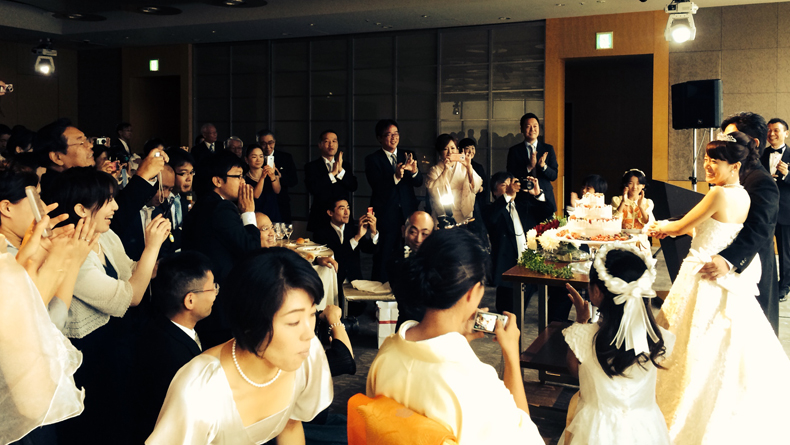

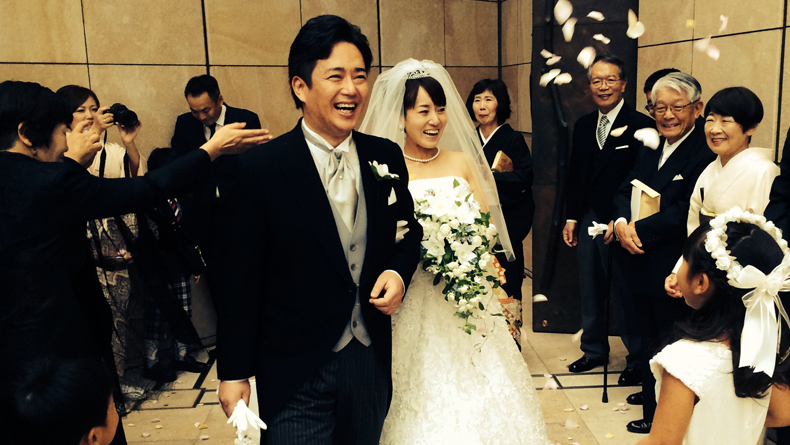
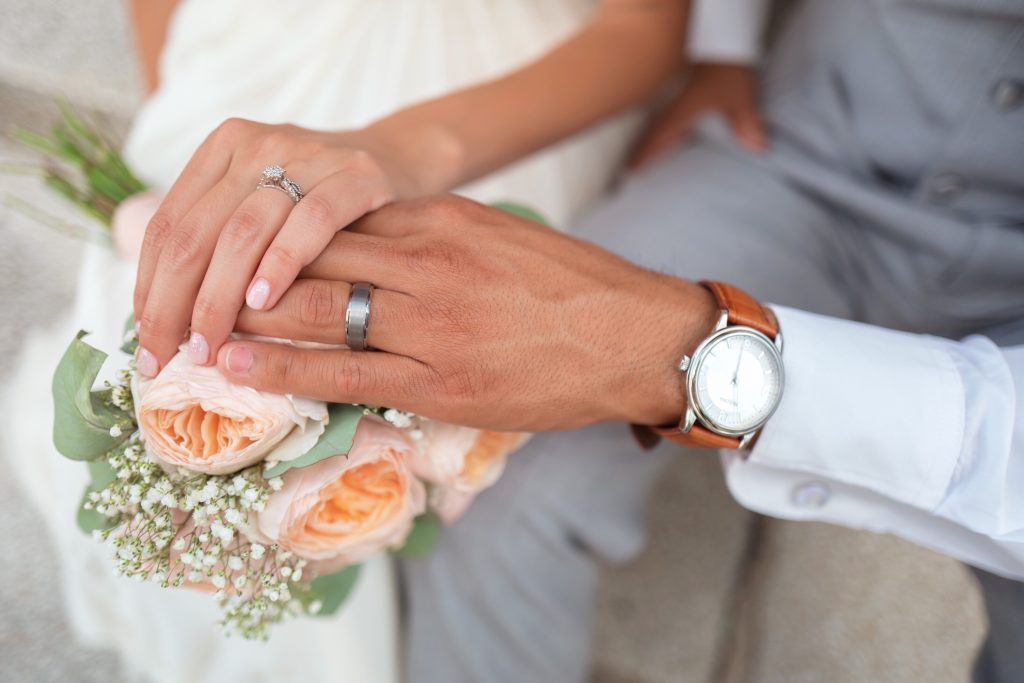
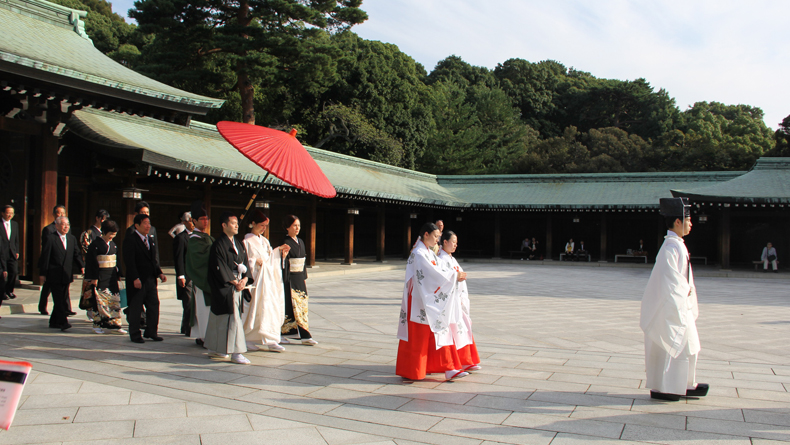














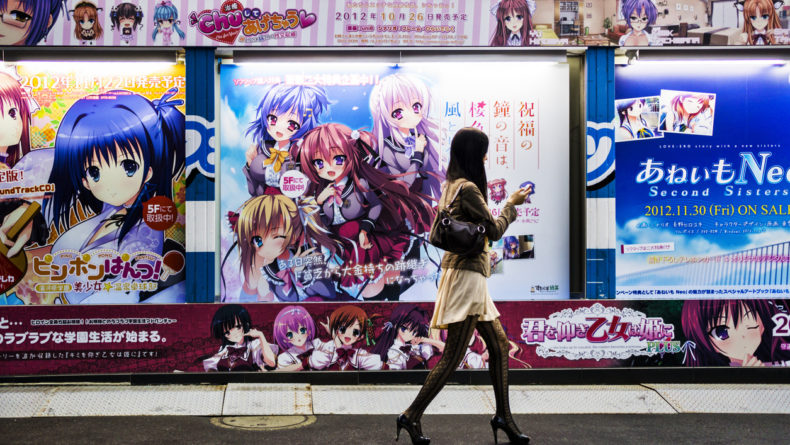
Leave a Reply